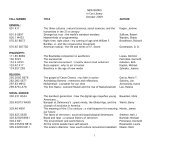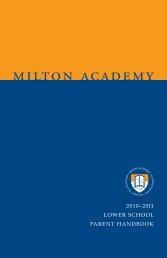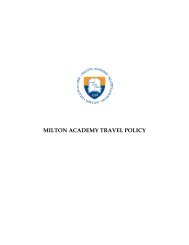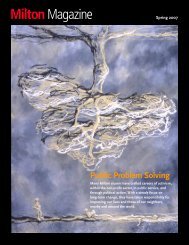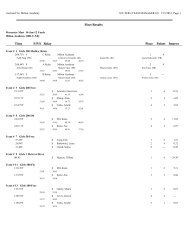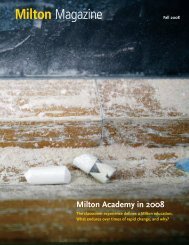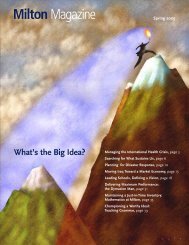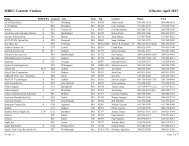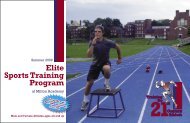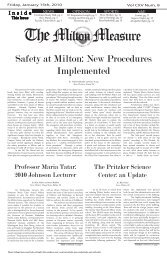Create successful ePaper yourself
Turn your PDF publications into a flip-book with our unique Google optimized e-Paper software.
Emmy Norris is a prowler for “cultural properties” at Harvard,preserving and insuring important artifacts.control; improved alumni and development relations; alertingof departments to the presence of significant works;information for the general public; clarification of legal status;documentation for the insurance office; and, of course,periodic supervision. In many cases, Harvard did not knowwhat it had. People retire and take stories with them; whatone person considers disposable may in fact have considerablevalue; something that was “always there” appreciatedgreatly in value over the centuries.The survey of these objects, called “cultural properties” forlack of a better word, has just been completed after threeyears. Now that Harvard knows what it has, we can workwith the information to make policy decisions as to theirtreatment, deaccession, publicity and so forth.The work itself was simple: I went with an assistantthrough Harvard properties with a tape measure, laptopcomputer and digital camera. We worked building bybuilding, having first contacted department heads andbuilding managers. We asked for their suggestions as towhat to include and then we took a look around. It isalways worth taking a personal look; only with physicalinspection can it be determined what is important, what isdeteriorating, and what is in the wrong place. We gatheredbasic museum information—object type, artist, title, century,materials used, donor, measurements, etc.—as well as adigital photo. If the object was deteriorating or neededextra security, we flagged that entry and advised the departmentin charge. The survey has taken us to Sutton Islandand Kittery Point in Maine, Washington, D.C., numeroussites west of Boston—including historic houses, an oldNIKE missile site, the Harvard Forest and the Oak RidgeObservatory—as well as the campuses in Cambridge,Boston and Allston. The database contains some 3,500objects from all parts of Harvard except for the Law School,which prefers to keep its own records.We never knew what would turn up, and so the vague definitionof “cultural properties” expanded as we went along.Examples include Josiah Quincy’s walking stick; Edward R.Murrow’s beat-up old desk; a beautiful old surveyor’sinstrument; gorgeous stained glass and late-19th-centurytiles; 19th-century teaching aids; the football that won the1920 Rose Bowl; Civil War–era baseballs; and buggies andsleighs.Information about these objects has been most useful tovarious departments of the university. This would be trueat other sites, where valuable objects are not tracked. Somany fine things disappear from old institutions; I thinkparticularly of private schools, colleges and private clubs.I urge those involved with these to take a closer look andtake appropriate action, rather than waiting to close thebarn door until the horse is stolen.Reach Harvard’s curator of unexpected discoveries atenorris@camaid.harvard.edu.51 <strong>Milton</strong> Magazine



